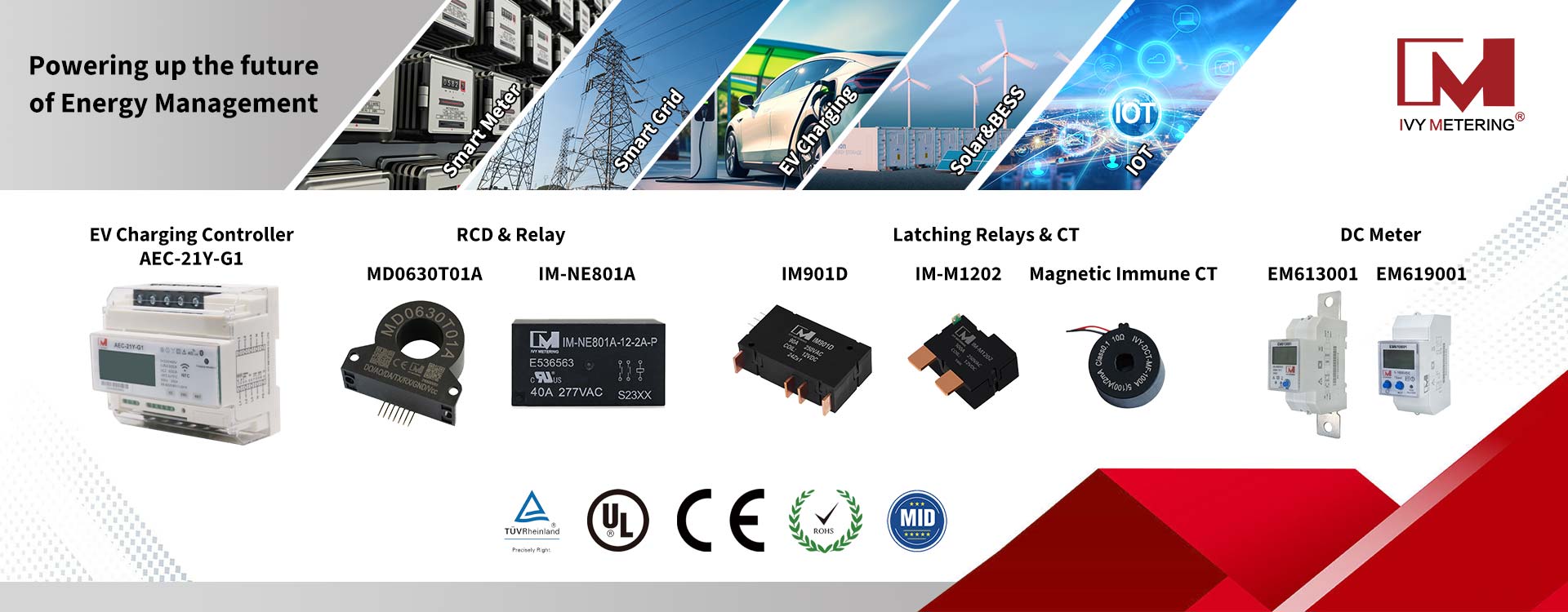EV Charging Safety On-Off AC Relay IM-NE801A
The increasing automation and electrification of our daily lives has created a growing need for safe, robust and energy-efficient ways to switch relatively large amounts of electricity. Home solar power systems use relays to control the flow of electricity for local consumption through an inverter, to battery storage, or back to the grid. Electric vehicle (EV) chargers use relays to control the flow of large amounts of energy into the car battery and protect the user by implementing fail-safe charging mechanisms and fault protections such as ground current leakage.
Electric vehicle chargers are also creating demand for power relays. Home and low-power public and commercial chargers provide AC power, which relies on the vehicle's on-board electronics to rectify it to DC and charge the battery. Charging EVs at power levels around 50kW uses the charger's DC feed, since high power rectification is done most efficiently in off-board chargers.
Safe battery charging involves the use of multiple relays to connect the vehicle to the charger, or isolate the vehicle from the charger, and keep users safe by managing potentially hazardous conditions such as ground faults or creepage currents. Most relays used on these chargers need to handle between 16A at 250V AC and 32A at 380V AC in a three phase system. For safety reasons, the main relay in this circuit should be a normally open fail-safe design so that in the event of a charger failure, the current flow to the EV is cut off.
Relays and contactors are used to disconnect the cable or cable socket from the vehicle in the event of a problem or at the end of a full charging cycle. They must be able to disconnect the full AC current of the on-board charger under load in an emergency, but typically switch at no or very low load current. For this application, conventional AC contactors suffice, but they are bulky and relatively difficult to package into the small wall-mount enclosures that are common practice for home EV charger installations.
Typically, EVs come with a cable with a household plug on one end and a SAE1772 or equivalent plug on the other end to allow the use of an on-board charger. A control box is integrated in the cable for safety functions (mode 2). The use of cables without a control box (mode 1) is prohibited in some countries for safety reasons, and it is not possible to disconnect the vehicle from the socket if there is a problem with the vehicle. Conventional AC contactors are not suitable for use in control boxes integrated into the charging cable due to their size, but also because the contactor may be damaged by shock or accidentally operated when the cable is dropped.
Relays mounted on a PCB are ideal for these applications because they are smaller and less susceptible to unintentional operation due to vibration. Domestic systems are usually limited to around 32A. Often, for safety reasons, it is required to disconnect both live and neutral wires, so a bipolar relay such as the IM-NE801A is ideal for this purpose.Mode 3 (or Level 2) wall chargers can deliver higher currents, up to 80A in three-phase commercial systems, and therefore require larger relays. As with Mode 2 chargers, both the live and neutral wires are required to be disconnected for safety, hence the need for a bipolar relay. The rated switching current of IM-NE801A per pole is 40A/277VAC.
IM-NE801A Features:
Contact capacity: 40A 277VAC; Coil voltage: 12VDC/24VDC
Mounting type: PCB mounted through hole
Contact arrangement: 2 form A (DPST-NO)
Large contact gap and insulation distance
Number of operations: 50 000 cycles @32A, 230V on-off 1:9s
Contact resistance/load category: CC2
Low Temperature Rise; Sealed Structure to Resist Harsh Environment.
Comply with UL/TUV Certified, VDE0126/IEC61810-1 Standard.
Strong overcurrent carrying capacity, it can withstand 3 times of 1000A 1ms overcurrent












